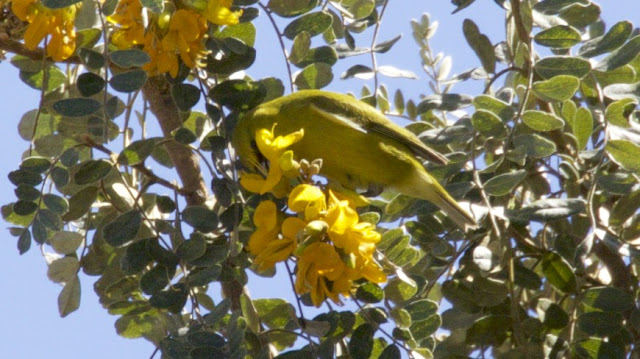We drove up a dirt road on the western flank of Mauna Kea to about 7,000 ft elevation. That is where the Mamane and Naio Trees live...and as a result so do the Palila. The Palila is a large finch-billed honeycreeper only found in Hawaii at this location. These Mamane-Naio forests are found between 6,000 feet and 9,000 feet. The Palila mostly feeds on Mamane seeds as well as their buds and flowers. They do take some insects and berries from Naio and Sandalwood trees. They have a very low reproductive rate and forgo nesting during droughts due to the reduced availability of food. The Palila is considered Critically Endangered; their estimated population is between 250 to 1,000 individuals. The population is in decline due to damage caused to their habitat by several introduced species such as pigs and sheep.
We were fortunate to have wonderful views of a group of Palila feeding in the Mamane Trees.

The Palila also feed on the Sandalwood Trees. The Sandalwood forests were logged in the mid 1800s under the reign of Kamehameha the 1st to almost extinction. Only a few trees remain in a State Sandalwood Reserve on Mauna Kea. There is currently a Sandalwood Reforestation Program in place on the slopes of Mauna Kea.
Sandalwood Tree
The Hawaii Amakihi also love the Mamane blooms

The World is Full of Beauty & Wonder,
Turtle & Hawk







So wonderful -- you two are seeing birds that we might never see. It makes me sad to think of the devastation caused by introduced species. Similar problems in Florida, as you know.
ReplyDelete